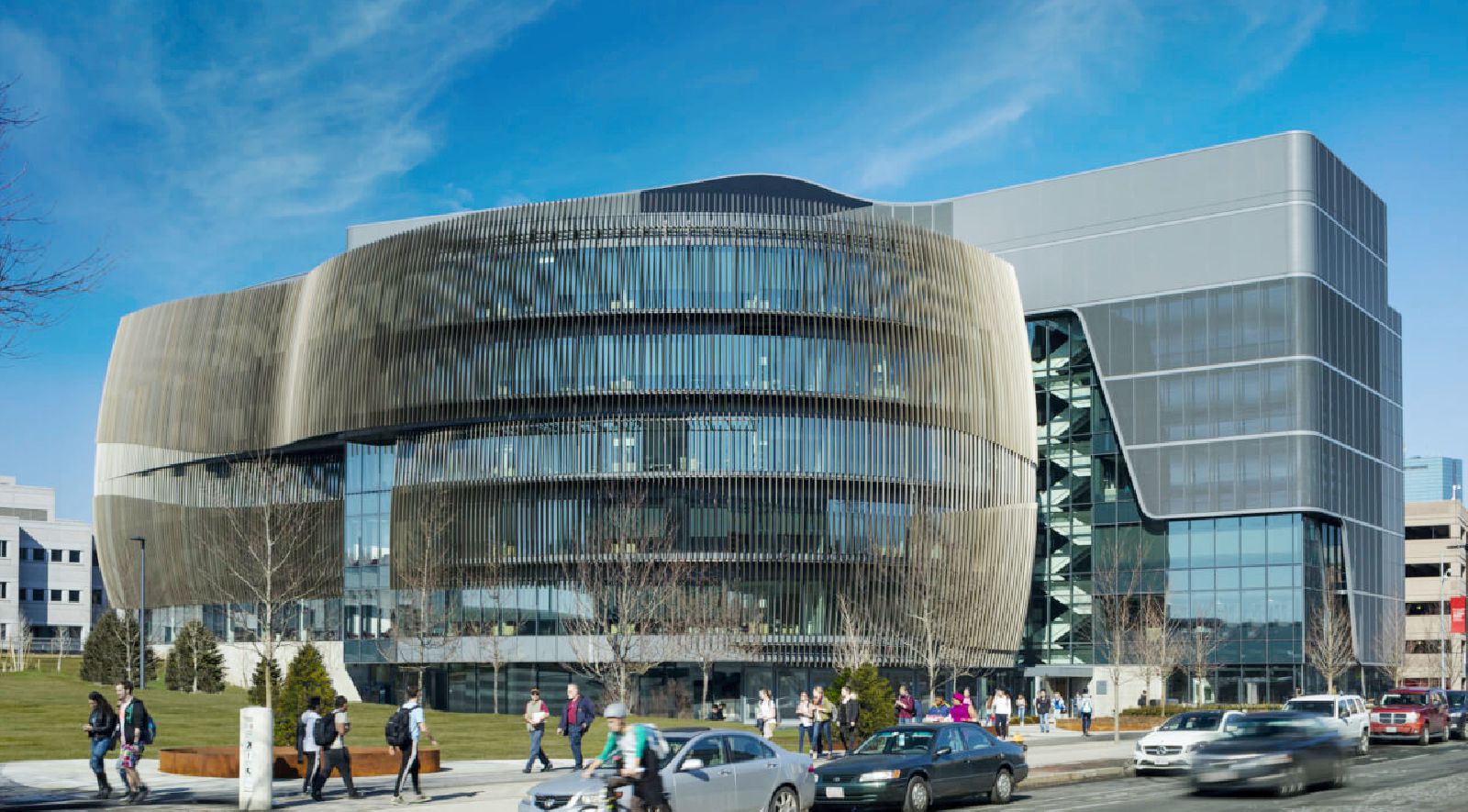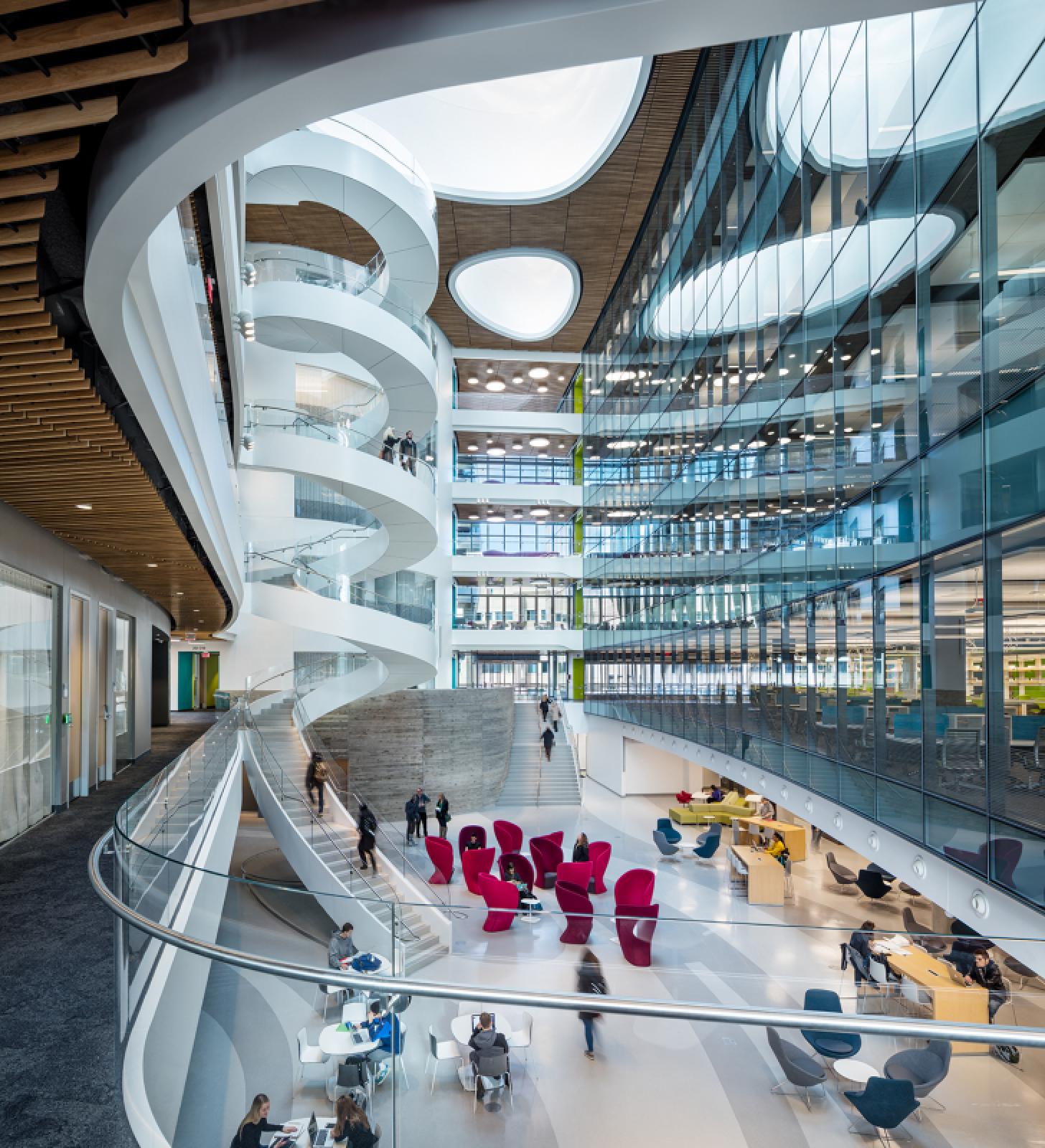Arup provided comprehensive strategies for Northeastern University’s new Interdisciplinary Science and Engineering Complex (ISEC). This LEED Gold-certified, 234,000ft2 facility includes a variety of laboratories and other research support spaces intended to promote collaboration and innovation across the fields of computer science, basic sciences, health sciences, and engineering.
In addition to helping Northeastern raise its profile within the scientific community and attract new talent, the project provides a pedestrian footbridge—an important new nodal link between the main campus, ISEC, and the communities of Fenway and Roxbury. The bridge not only enhances accessibility but also provides an important feeder to the adjacent MBTA Orange Line and bus station. Our structural designers helped Payette realise the bridge’s dramatic form, which utilises weathering steel plates.
An optimised building façade
One of the defining characteristics of the ISEC is its complex façade. The bronze, curved fins march across the curving office block, undulating in plan and split in elevation to create a free-form shape. To achieve the ISEC’s elegant, organic form, Arup and Payette relied heavily on modeling to address technical challenges. The fins contribute to the daylighting and thermal strategy by mitigating direct solar gains from the southwest while allowing views out and daylight in. In combination with the high-performance glazed curtain wall and the building’s mechanical system, the fins balance the façade’s thermal, daylighting, and comfort performance requirements.
Leading-edge heating and cooling strategies
The cascade air system works by recovering conditioned air from the ISEC’s offices and atrium and then transferring it to the lab. In addition to delivering significant energy savings over standard laboratory HVAC systems, the cascade air system helps to lower operations and capital costs through reductions in return ductwork. Since ventilation load is a major energy use in laboratories, active chilled beams are used to provide additional cooling in place of air cooling. To augment heating, we designed a hydronic run-around coil system that recovers energy from the lab’s exhaust air and uses it to pre-condition the outdoor air used for heating.
Signature lighting and daylighting design
Our sustainable lighting and daylighting strategies were critical to maximising the efficiency of the architectural design. The six-story central atrium was carefully to introduce views to the sky and provide ample daylighting, while also managing visual comfort in the adjacent lab and support spaces. The result is an interior glazed façade that puts the researchers on full display from within the atrium space. The electric lighting design further compliments the design strategy of the building by utilising integrated lights at lab benches, and primarily indirect lighting for ambient light levels in research areas.
The close collaboration between Payette and Arup, providing services including structural, geotechnical, MEP/FP engineering, façades, and lighting design consulting, was critical to helping Northeastern realise its ambitious aesthetic and performance goals for this project. The result is a Harleston Parker Medal-winning, LEED-Gold certified “temple to science” that outperforms Massachusetts’ stringent Stretch Energy Code requirements for new buildings by 20%. Source and photos Courtesy of Arup.





